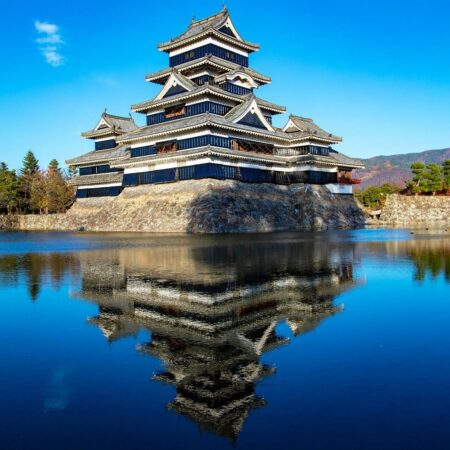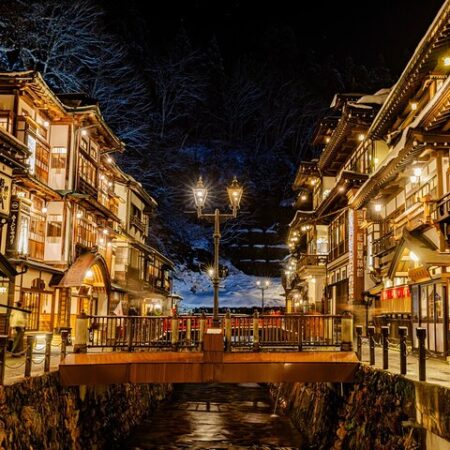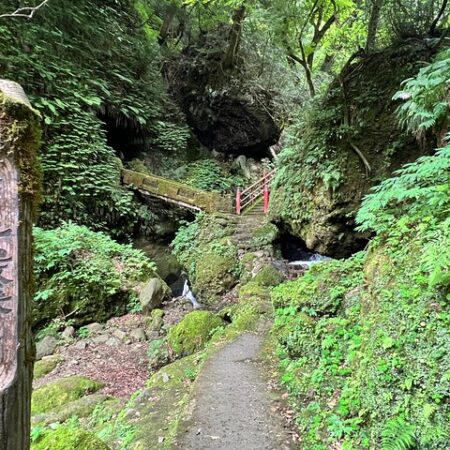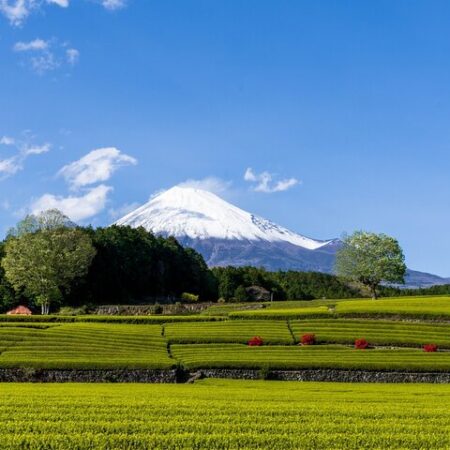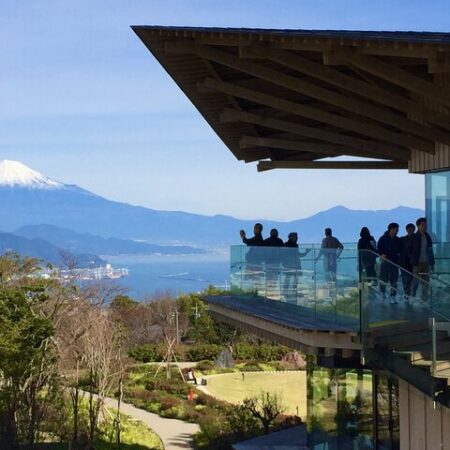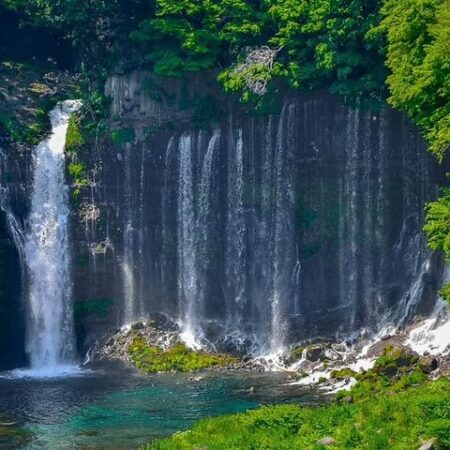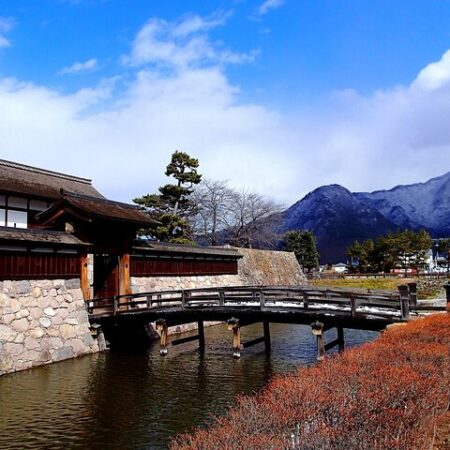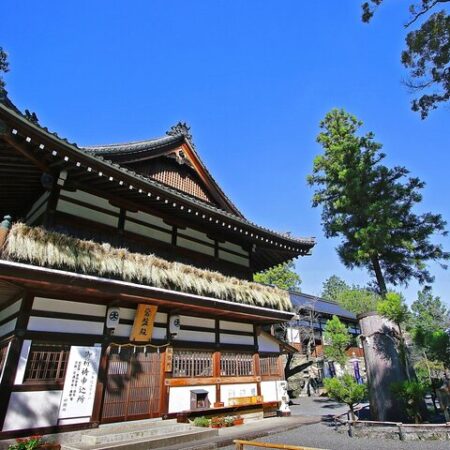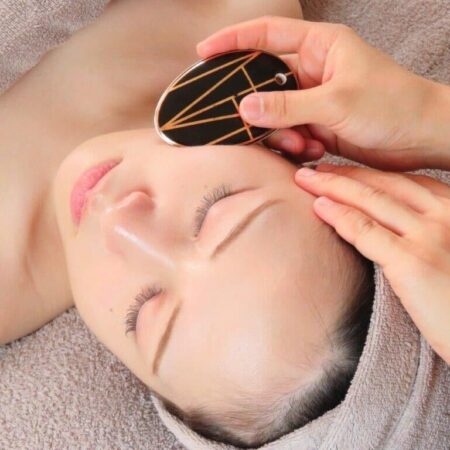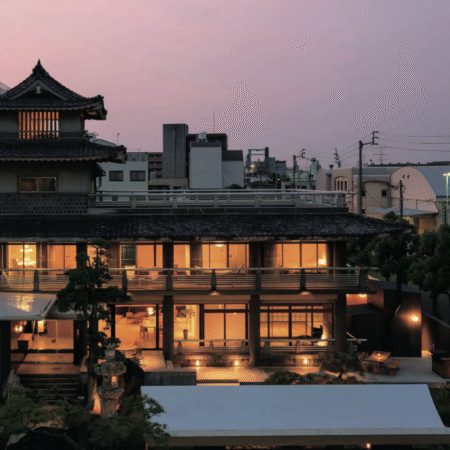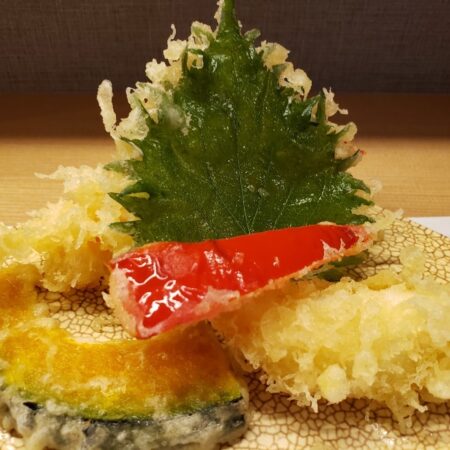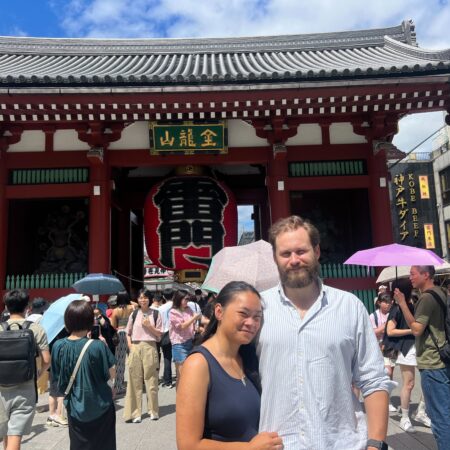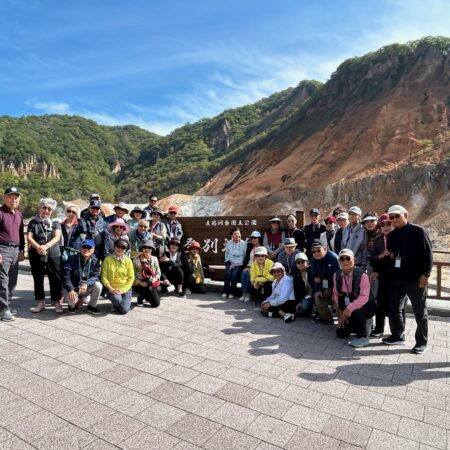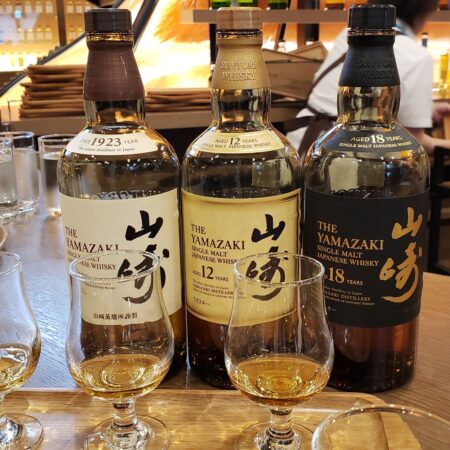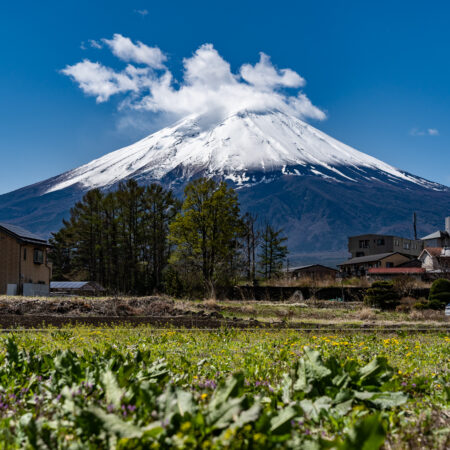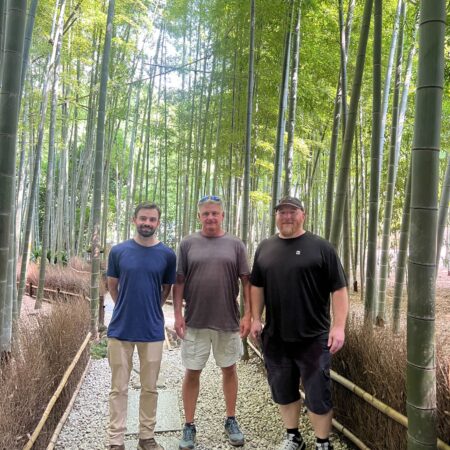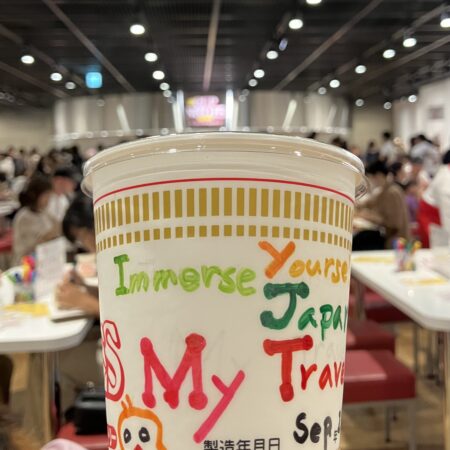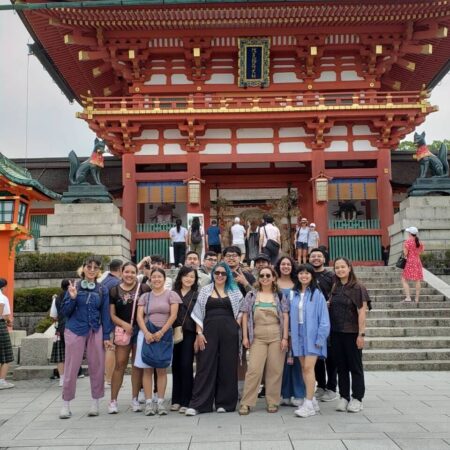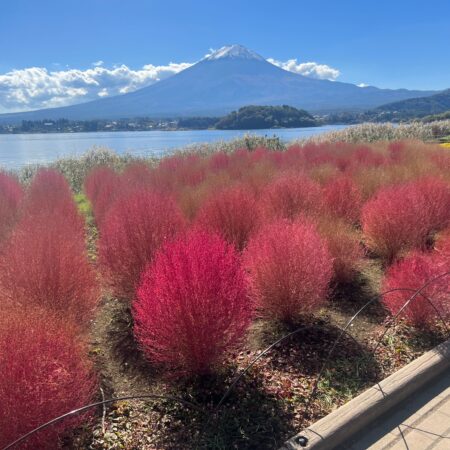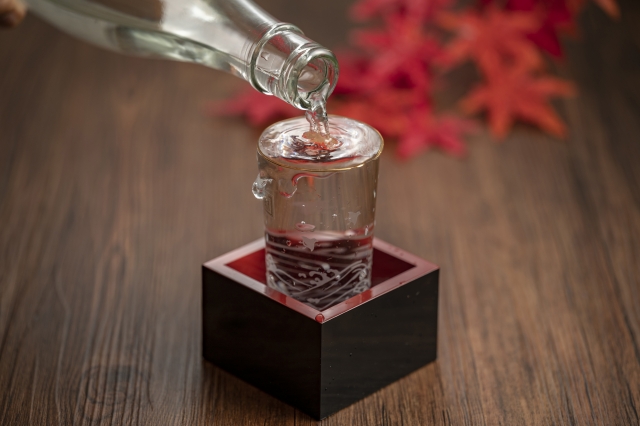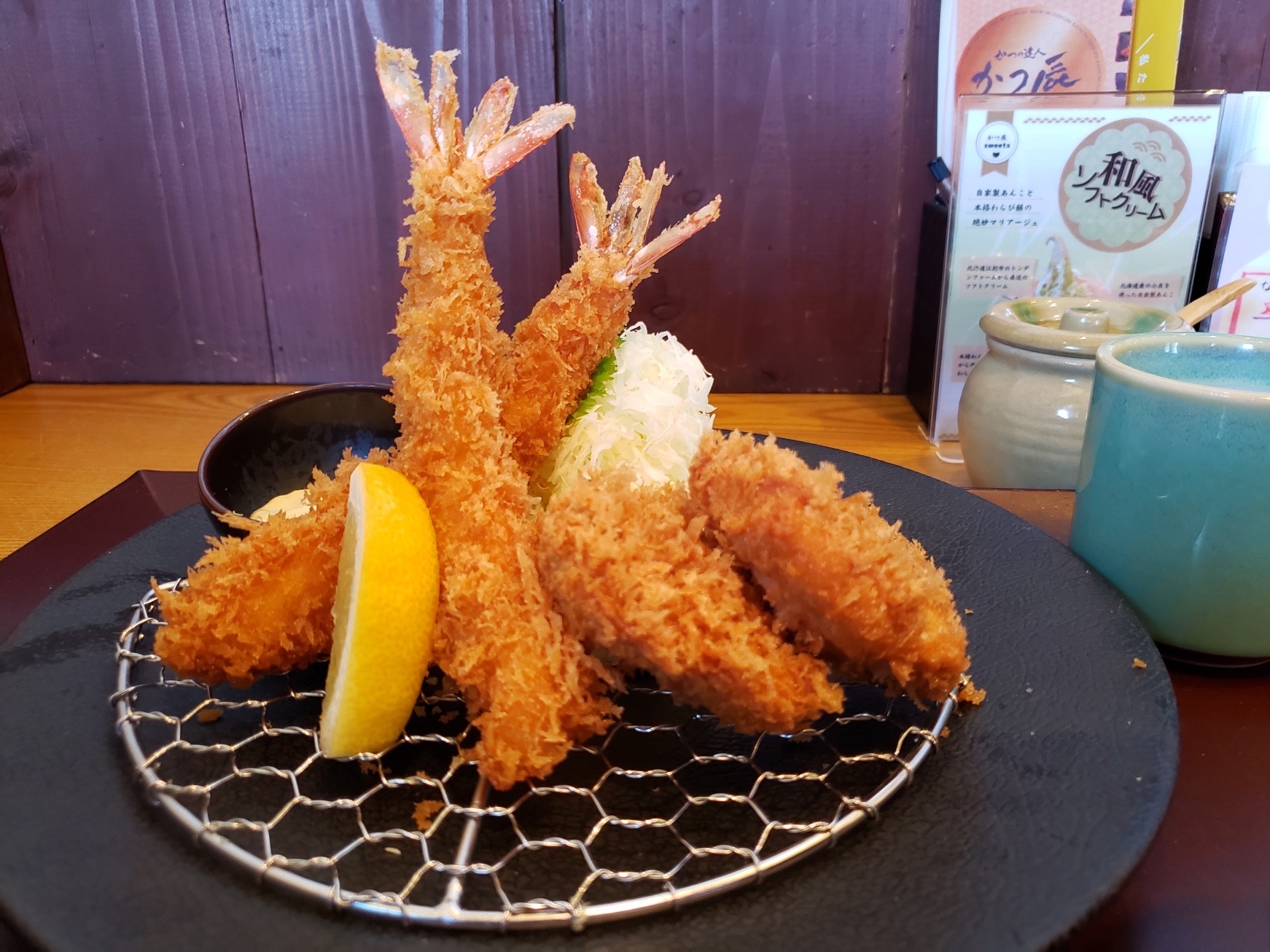Typical Japanese foods can be tried anywhere in Japan. If you find some you would like to try, please let us know. Your private guide will take you to the best restaurant during the tour! Please feel free to request us!
☆Sushi☆
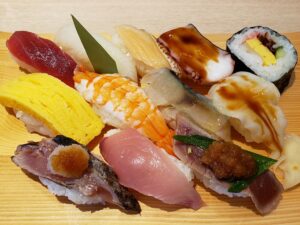
Sushi is basically vinegared rice with seafood or vegetable on the top. Sushi is available in various styles and price ranges at traditional sushi restaurants or kaitenzushi (conveyor belt sushi) restaurants. There are countless varieties of ingredients, such as tuna, shrimp, eel, squid, octopus and fried egg. It is often served with pickled ginger, wasabi, and soy sauce. You’ll eat sushi with chopsticks or your hands
☆Udon☆
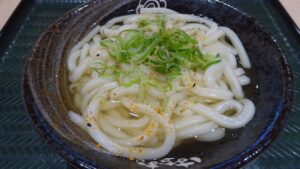
Udon are thick, tube-like noodles made from wheat flour and widely available at restaurants across Japan. Udon is often served with kakejiru, a simple broth made with soy sauce, and topped with tempura, green onions, deep-fried tofu, and kamaboko, a thin fish cake that is usually white with a pink spiral design. Udon can be served hot or cold, depending on your preference. You’ll eat udon with chopsticks.
☆Ramen☆
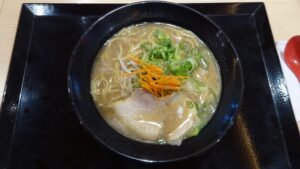
Ramen generally consists of wheat noodles in a dashi soup, or broth, and paired with toppings such as egg, pork, bean sprouts, seaweed, green onions, and other ingredients. Each restaurant serves its unique dashi soup. There are four main categories of dashi soup, 1. Shoyu, or soy sauce, 2. Miso, or fermented soybean paste, 3. Sio, a clear, salty broth, and 4. Tonkotsu, or pork. You’ll eat ramen with chopsticks and a spoon.
☆Tonkatsu☆ ☆Ebi Fry☆
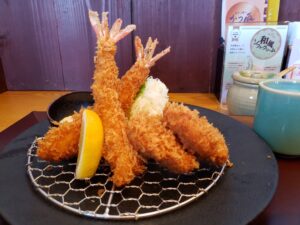
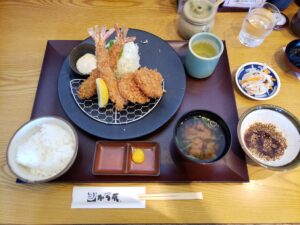

Tonkatsu is Japanese pork cutlet, made by deep frying thick slice of pork coated in beaten eggs, flour and breadcrumbs. Tonkatsu is usually served with tonkatsu sauce, sesame seeds, mustard, or salt. You’ll eat tonkatsu with chopsticks. In addition, Tonkatsu is also served in other forms such as katsudon (pork cutlet is soaked with egg on top of a bowl of rice), katsu sand (sandwich with pork cutlet), and katsu curry (curry with pork cutlet).
Ebi Fry is made by putting peeled prawn in flour, egg, and breadcrumbs to fry in oil. “Ebi” means “prown” in Japanese. Ebi Fry is a representative of “Yousyoku” (Western style Japanese dish). So Ebi Fry is often found on the menu of Japanese restaurants and cafes, and also a popular bento lunch item. Ebi Fry is usually served with Worcester sauce, tartar sauce, lemon juice, or tomato ketchup. You’ll eat Ebi Fry with chopsticks or a “knife and fork”.
☆Soba☆
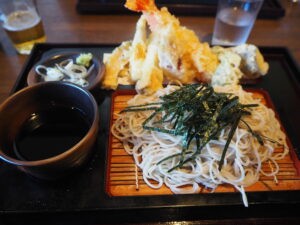
Soba noodles are noodles made of buckwheat flour and served in hot and cold dishes. Soba dishes are very popular and it is very easy to find soba restaurants anywhere in Japan. The percentage of buckwheat flour in soba noodles typically ranges between 40% and 100% depending on the restaurant. A special type of soba dish is Toshikoshi Soba, which is a symbol of longevity, that is only eaten on New Year's Eve. Please try Soba noodles with chopsticks!
Tempura
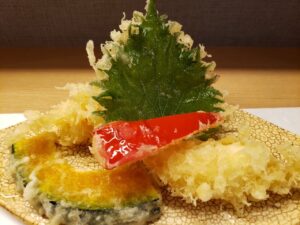
☆Tempra☆
Tempura is a typical Japanese dish usually consisting of seafood, meat, and vegetables, which have been dipped in a mixture of cold water, flour and egg then fried in oil. Tempura pieces are usually individually seasoned with dipped into a dipping sauce (tentsuyu) or salt before eaten. You’ll eat Tempura with chopsticks. You can enjoy Tempura at Tempura-ya which is restaurants specialized in the dish, Izakaya which is casual Japanese bars, etc.


